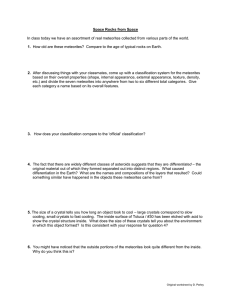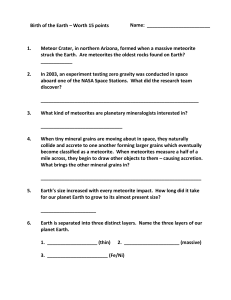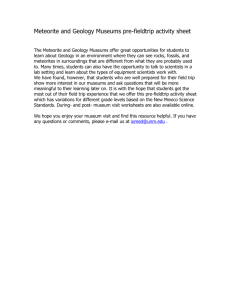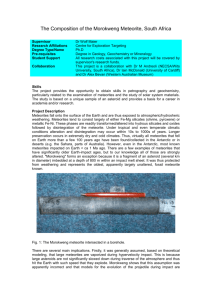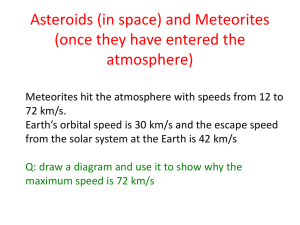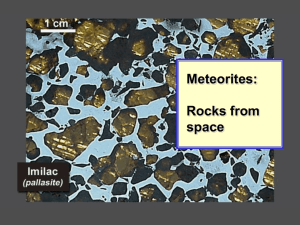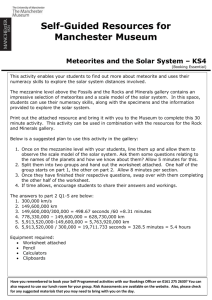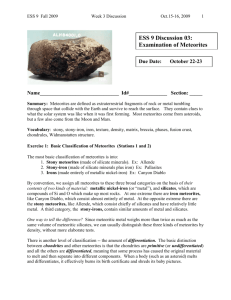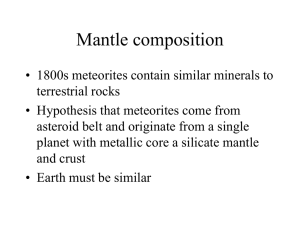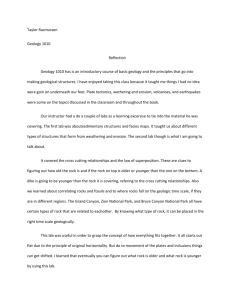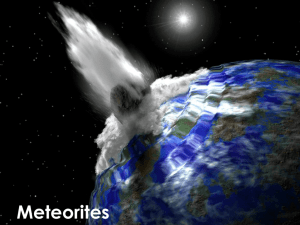Pre- Field Trip Worksheet
advertisement
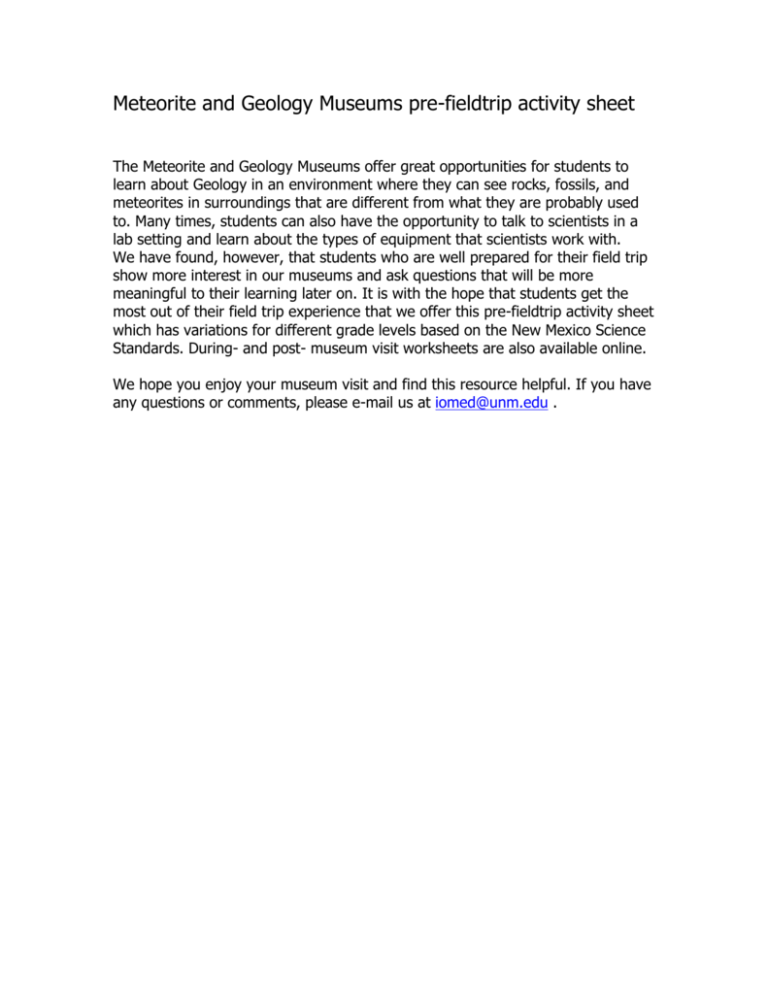
Meteorite and Geology Museums pre-fieldtrip activity sheet The Meteorite and Geology Museums offer great opportunities for students to learn about Geology in an environment where they can see rocks, fossils, and meteorites in surroundings that are different from what they are probably used to. Many times, students can also have the opportunity to talk to scientists in a lab setting and learn about the types of equipment that scientists work with. We have found, however, that students who are well prepared for their field trip show more interest in our museums and ask questions that will be more meaningful to their learning later on. It is with the hope that students get the most out of their field trip experience that we offer this pre-fieldtrip activity sheet which has variations for different grade levels based on the New Mexico Science Standards. During- and post- museum visit worksheets are also available online. We hope you enjoy your museum visit and find this resource helpful. If you have any questions or comments, please e-mail us at iomed@unm.edu . Grades 9-12 Pre –Museum Fieldtrip Worksheet Meteorite Museum 1. How large are the objects you see in the sky at night? _____________________________________________ 2. What types of advanced technology do we use to investigate our solar system? ______________________________________________ 3. What is our solar system made up of? ______________________________________________ 4. What type of object does a meteorite come from? ______________________________________________ 5. How do we know that meteorites have landed on Earth? ______________________________________________ 6. Do all meteorites look the same? ______________________________________________ 7. What are some ways you can tell a meteorite from a regular Earth rock? _______________________________________________ 8. What kinds of information do you think scientists can learn by studying meteorites? _______________________________________________ Geology Museum 1. What is the difference between a mineral and a rock? _______________________________________________ 2. Describe the internal structure of the Earth _______________________________________________ 3. What is relative dating? ____________________________________________ 4. What is radiometric dating? ____________________________________________ 5. What can a rock tell you about Earth’s past? ____________________________________________ 6. Fossils are found in what type of rock? ____________________________________________ 7. What kinds of things can a fossil tell us? ____________________________________________ 8. What types of animal and plants do we see in the fossil record? ____________________________________________ Answers Meteorite Museum 1. The objects you can see in the sky are huge and separated from one another by vast distances. 2. Telescopes, satellites, computer models, radio telescopes, rovers, spacecraft. 3. The Sun, which is a medium sized star, nine planets, their moons, asteroids, comets. 4. Meteorites usually come from asteroids, but sometimes they can also come from the moon or Mars. 5. We have seen them falling from the sky, and large meteorites leave craters, like Meteor Crater in Arizona. 6. No, meteorites do not all look the same. 7. Meteorites can have thumbprint-like indentations called regmaglypts on them, some can have a thin black or brown coating called a fusion crust, you can often see shiny metal on a meteorite, meteorites can often be heavier than Earth rocks, magnets are attracted to the iron metal in meteorites, and some meteorites have little blobs of lighter mineral in them called chondrules. 8. Meteorites can give us clues to the origin of the solar system, what types of minerals can be found on asteroids and elsewhere in our solar system, they reflect the internal composition of other planets, and of the Earth. Geology Museum 1. A mineral is a natural solid formed through geological processes. Minerals have a chemical composition and a crystal structure. A rock is a combination of two or more minerals and is also formed by geologic processes. 2. Core, mantle, crust. Or, the inner core, outer core, lower mantle, transition zone, upper mantle, mohorovicic discontinuity, crust. 3. An investigative method which can be used to determine geologic time by investigating rock sequences. 4. A dating method that uses the measurements from certain radioactive isotopes to determine the absolute age of a rock or mineral. 5. Whether the area was under or above water, what types of life lived at that time, what the environmental conditions are, such as whether there have been earthquakes or volcanoes in the area. Rocks can also tell us if there are natural resources in the area, and how long ago that rock was formed. 6. Sedimentary rocks. 7. The age of the rock that surrounds the fossil, what types of animals or plants lived at a certain time, where they lived, how long they lived, and what they may have looked like, what types of food they ate, sometimes how the animal died. Also whether the area was under or above the ocean, in a lake, or a stream. 8. Invertebrates, vertebrates, plants. Or you could answer with dinosaurs, mammoths, etc. Rev 1, 12/04

